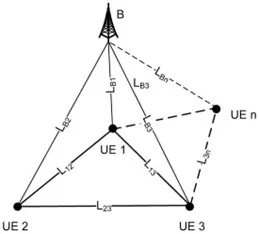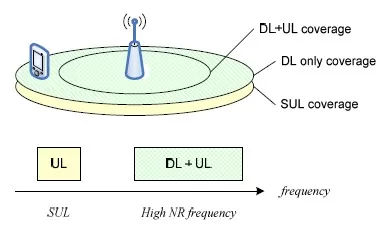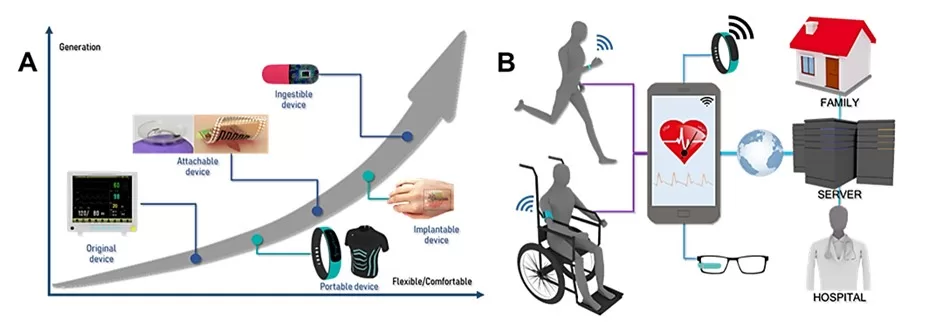Introduction
The advent of Reduced Capability (NR RedCap) devices marks a new era in the industrial Internet of Things (IIoT), offering a blend of efficiency, reliability, and cost-effectiveness tailored for mid-end applications.
3GPP plays an important role in developing global standards for mobile communication systems, ensuring interoperability and performance across different networks and devices. Each 3GPP release brings significant advancements and refinements to the existing standards, addressing emerging technological needs and paving the way for future innovations.
3GPP Release 17 laid the foundation for NR RedCap, introducing the concept and initial capabilities required for industrial applications. Building on this foundation, Release 18 brings crucial enhancements designed to meet the evolving demands of the IIoT landscape. These advancements include improvements in device-to-device (D2D) communication, supplementary uplink (SUL) performance, and multi-band operation, which collectively enhance the overall efficiency and reliability of NR RedCap devices.
Device-to-Device (D2D) Communication
D2D communication allows devices to connect directly without relying on the traditional cellular network infrastructure. This enhancement is particularly beneficial in industrial settings where the density of devices can create significant network load and where immediate communication between devices is crucial for operational efficiency and safety.

Figure 1: Principe of D2D Communication
The simplified model depicted in the figure 1 is based on a high-level system architecture where wireless mobile users connect to a base station using the LTE interface. The network consists of multiple nodes (denoted as N), with the user equipment (UE) such as IoT devices.
Key Features of the Model:
- Node Connections: Links (L12, L13, L23, L3n) between nodes can utilize either LTE or WiFi interfaces, offering flexibility in communication methods.
- Uniform Link Attenuation: The link attenuations between the base station and user equipment, as well as the direct links between nodes, are assumed to be uniform. This simplifies the analysis by considering equal propagation conditions.
- 3GPP Interfaces: All communication links between user equipment and the base station adhere to 3GPP standards, ensuring compatibility and standardization.
Benefits of D2D Communication for NR RedCap:
- The base station controls D2D communication, enabling efficient interference management. Nodes can form clusters with a cluster head, which manages communication with the base station, thus optimizing network resources.
- Extended Coverage: By leveraging D2D communication, NR RedCap devices can maintain robust connectivity even at the cell edges, where direct communication with the base station may be challenging.
- Enhanced Reliability: The use of D2D communication improves the overall reliability of the network by providing alternative paths for data transmission, thus reducing the dependency on the base station.
- Interference Management: Centralized control by the base station ensures efficient interference management, enhancing the overall network performance and user experience.
Supplementary Uplink (SUL) and Multi-band Operation
The uplink performance of NR RedCap devices has been significantly enhanced in Release 18 through the support of Supplementary Uplink (SUL). Uplink communication is crucial for sending data from devices to the network, and its efficiency directly impacts the performance of many industrial applications.

Figure 2: Illustration of SUL
This figure illustrates the concept of SUL, where different coverage areas are depicted based on frequency usage. The central area represents optimal DL and UL coverage, the middle area shows DL only coverage, and the outermost area highlights the extended UL coverage provided by SUL. This visual underscores how SUL enhances uplink performance by utilizing lower frequencies for improved reach and reliability.
SUL allows NR RedCap devices to use additional frequency bands for uplink communication, improving coverage and capacity without increasing device complexity. This is achieved by utilizing lower frequency bands, which have better propagation characteristics, thereby extending the reach of uplink signals and enhancing coverage at the cell edges.
Use Cases: Industrial Mid-End Wearable Applications (IM-EWA)
NR RedCap devices have been designed to meet the specific needs of Industrial Mid-End Wearable Applications (IM-EWA), which occupy a niche between high-end and low-end industrial applications. These applications demand reliable, low-latency communication with moderate data rates and stringent requirements for operational efficiency and safety. The enhancements introduced in 3GPP Release 18 are pivotal in meeting these requirements and expanding the capabilities of industrial wearables.
Real-Time Safety Monitoring:
- Immediate Alerts: NR RedCap devices equipped with D2D communication can instantly alert workers and central control systems about hazardous conditions. For instance, smart helmets and wristbands can monitor environmental conditions (such as gas levels, temperature, and humidity) and worker vitals (such as heart rate and body temperature) in real-time. If any parameter exceeds safe thresholds, an immediate alert can be sent to both the worker and the safety management system.
- Enhanced Coverage at the Cell Edge: The use of SUL ensures that uplink communication remains reliable even at the edges of the cell, where traditional uplink signals may be weak. This is crucial for maintaining continuous monitoring and timely alerts, regardless of the worker’s location within the industrial site.
- Cluster-Based Communication: In scenarios where multiple workers are in proximity, D2D communication allows them to form a cluster. A designated cluster head can communicate directly with the base station, reducing the load on the network and ensuring that all workers receive timely updates and alerts.
Healthcare Monitoring

Figure 3: Use Case in Healthcare
- Vital Signs Monitoring: Wearable devices such as smartwatches and health bands can continuously monitor vital signs, including heart rate, blood pressure, and oxygen levels. These devices can use the improved uplink capabilities to transmit health data in real-time to healthcare providers or industrial health management systems.
- Emergency Response: In case of a health emergency, such as a sudden drop in blood pressure or an abnormal heart rate, the wearable device can use D2D communication to alert nearby workers and send an emergency signal to the healthcare team. This ensures a rapid response, which can be critical in preventing severe health issues.
- Reliable Data Upload: The use of SUL ensures that health data can be reliably uploaded to central systems even in areas with poor coverage. This continuous data flow is essential for monitoring the health of workers and ensuring timely medical interventions.
- Energy Efficiency: The optimized uplink mechanisms reduce the power consumption of wearable devices, extending their battery life. This is particularly important for health monitoring devices that need to operate continuously without frequent recharging.
- Secure Communication: The enhancements in Release 18 include robust security features to protect sensitive health data. This ensures that personal health information is securely transmitted and stored, maintaining privacy and compliance with regulations.
Future Directions and Research Opportunities
As the field of Industrial Internet of Things (IIoT) continues to evolve, there are several potential enhancements and new features that future 3GPP releases could introduce to further improve NR RedCap technology.
- Advanced AI and Machine Learning Integration
Future 3GPP releases could incorporate more advanced AI and machine learning algorithms to enhance the performance and capabilities of NR RedCap devices.
AI-driven predictive maintenance can anticipate equipment failures before they occur, reducing downtime and maintenance costs. AI can be used to detect and mitigate security threats in real-time, providing a more robust and secure communication framework.
- Improved Energy Efficiency
Energy efficiency is a critical aspect of industrial IoT applications. The development of more advanced power-saving modes that intelligently manage energy consumption based on real-time usage patterns.
- 5G-Advanced and 6G Networks
As we move towards 5G-Advanced and eventually 6G, NR RedCap devices will benefit from the ultra-low latency, high reliability, and enhanced bandwidth capabilities of these next-generation networks.
Preparing NR RedCap devices to be compatible with 6G technologies, which will offer unprecedented speeds, connectivity, and intelligence.
- Non-Terrestrial Networks (NTNs)
Non-terrestrial networks, including satellite and high-altitude platform systems, can extend the reach of NR RedCap devices to remote and challenging environments.
Using satellite links to ensure continuous connectivity in remote industrial sites where terrestrial networks are unavailable.
- Edge and Fog Computing
The integration of edge and fog computing can significantly enhance the performance and efficiency of NR RedCap devices by bringing computational resources closer to the data source.
Enabling real-time data processing and analytics at the edge, reducing latency and bandwidth usage. Utilizing a distributed computing architecture to manage and process data closer to where it is generated, improving response times and efficiency.
Conclusion
The enhancements introduced in 3GPP Release 18 for NR RedCap devices mark a significant advancement in the industrial Internet of Things (IIoT). These improvements, including device-to-device (D2D) communication, supplementary uplink (SUL) performance, and multi-band operation, collectively enhance the efficiency, reliability, and coverage of NR RedCap devices.
D2D communication facilitates direct connectivity between devices, reducing the load on traditional cellular infrastructure and ensuring robust performance even at the cell edges. This is particularly beneficial in dense industrial environments where immediate communication is crucial for operational safety and efficiency. SUL enhances uplink capabilities by utilizing lower frequency bands, extending coverage and improving data transmission reliability.
The integration of advanced security features ensures that sensitive health data is protected, maintaining privacy and regulatory compliance.
Looking forward, future 3GPP releases are expected to further enhance NR RedCap technology through the integration of advanced AI and machine learning, improved energy efficiency, compatibility with 5G-Advanced and 6G networks, and the incorporation of non-terrestrial networks and edge computing. These innovations will continue to drive the evolution of IIoT, enabling smarter, more efficient, and more secure industrial operations.
References
- 3GPP TR 23.700-68, “Study on RedCap Phase 2”, 2023
- 3GPP, “Views of Rel 17 NR Light,” RP-192018, September 20121
- “3GPP NR: Interesting Times to Come for (Smart)-IoT in Release 17,” White Paper, 2020

